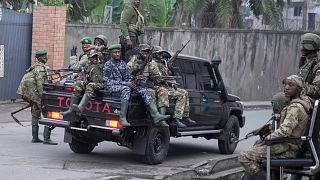USA
At least 242 million children across 85 countries faced disruptions in their education due to extreme weather events such as heatwaves, cyclones, and flooding last year, according to a recent report from the United Nations Children's Fund.
This means that approximately one in seven school-aged children worldwide experienced interruptions in their schooling at some point in 2024 due to climate-related issues.
The report highlighted the devastating impact on certain nations, where numerous schools were destroyed by severe weather, particularly affecting low-income countries in Asia and sub-Saharan Africa.
However, the effects of extreme weather were felt globally; for instance, torrential rains and floods in Italy at the end of the year impacted the education of more than 900,000 children, while catastrophic flooding in Spain also halted classes for thousands.
UNICEF noted that while southern Europe grappled with deadly floods, and Asia and Africa faced cyclones and flooding, heatwaves emerged as the leading climate threat to education last year, coinciding with the hottest year on record.
In April alone, more than 118 million children had their schooling disrupted, as regions from Gaza to the Philippines endured prolonged heatwaves with temperatures exceeding 40 degrees Celsius (104 Fahrenheit).
Catherine Russell, UNICEF's executive director, emphasized the heightened vulnerability of children to weather-related crises.
She stated, "Children's bodies are uniquely susceptible. They heat up more quickly, sweat less effectively, and take longer to cool down compared to adults. In classrooms without relief from the oppressive heat, children struggle to focus, and they cannot reach school if their paths are flooded or if schools have been destroyed."
In 2024, approximately 74% of children impacted by climate-related disasters were located in middle- and low-income nations, highlighting the severe repercussions of climatic extremes on the most vulnerable populations.
In April, flooding devastated over 400 schools in Pakistan.
Meanwhile, Afghanistan experienced intense heatwaves followed by catastrophic flooding in May, which led to the destruction of more than 110 schools, according to UNICEF.
Southern Africa faced prolonged drought conditions worsened by the El Niño phenomenon, jeopardizing the education and futures of millions of children.
The crises show no signs of improvement.
The impoverished French territory of Mayotte in the Indian Ocean was ravaged by Cyclone Chido in December and subsequently struck by Tropical Storm Dikeledi this month, resulting in children being out of school for six weeks.
Cyclone Chido also wreaked havoc in Mozambique, destroying over 330 schools and three regional education departments, where access to education is already a significant challenge.
UNICEF emphasized that the global education systems are “largely ill-equipped” to handle the impacts of extreme weather events.











00:49
Teachers strike shuts down schools across Cameroon
Go to video
In Namibia, horse-riding becomes therapy for children with special needs
02:35
Sudanese Refugee Children Find Hope in Libyan School
01:37
Indigenous and climate activists rally in Brasília ahead of COP30
Go to video
Major nations agree on first global tax on shipping’s greenhouse gas emissions
Go to video
Police clash with students over controversial play at Kenya’s drama competition